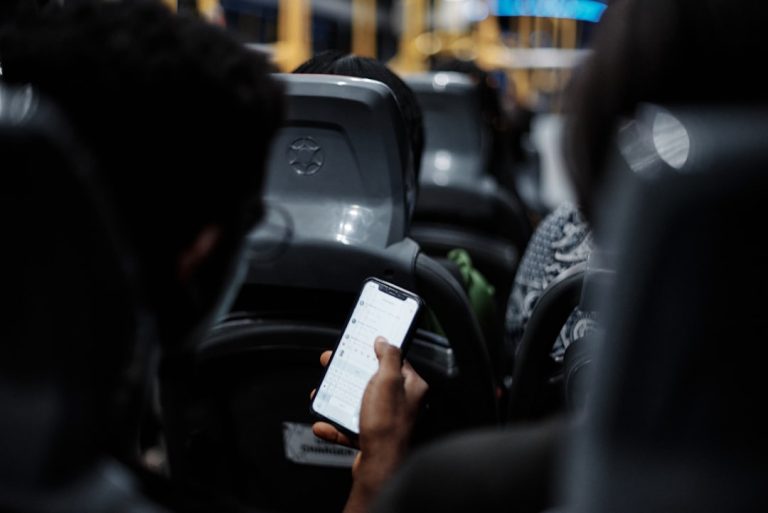
Public transportation systems serve as the backbone of urban mobility, providing essential services that connect individuals to their workplaces, educational institutions, and recreational activities. These systems encompass a variety of modes, including buses, subways, trams, and commuter trains, each designed to cater to the diverse needs of a city’s population. The effectiveness of public transportation is often measured by its accessibility, reliability, and affordability.
In densely populated areas, these systems alleviate traffic congestion and reduce the environmental impact of personal vehicle use. Moreover, they promote social equity by offering low-cost travel options for those who may not have access to private transportation. Understanding the intricacies of public transportation requires an appreciation of its operational frameworks, funding mechanisms, and the role of government policies in shaping its development.
In many cities, public transportation is not merely a means of getting from point A to point B; it is a vital component of the urban ecosystem that fosters economic growth and community engagement. The integration of technology into public transit systems has revolutionized how passengers interact with these services. Real-time tracking apps, contactless payment systems, and digital route planners have made it easier for commuters to navigate their journeys efficiently.
Furthermore, public transportation systems are increasingly focusing on sustainability by incorporating electric buses and energy-efficient trains into their fleets. This shift not only addresses environmental concerns but also enhances the overall user experience by providing cleaner and quieter travel options. As cities continue to grow and evolve, understanding public transportation systems becomes crucial for fostering inclusive urban environments that prioritize mobility for all residents.
Key Takeaways
- Public transportation systems are cost-effective and environmentally friendly options for commuting.
- Obtaining a driver’s license requires passing a written and practical driving test.
- Carpooling and ride-sharing options can help reduce traffic congestion and save money on transportation.
- Navigating air travel involves booking flights, going through security, and understanding baggage policies.
- Bicycling and walking are healthy and sustainable transportation options that require proper safety measures.
- Transportation services for individuals with disabilities include accessible public transit and specialized paratransit options.
- Legal assistance is available for immigration-related transportation issues such as driver’s license eligibility and public transit access.
Obtaining a Driver’s License
Acquiring a driver’s license is often seen as a rite of passage for many individuals, symbolizing independence and the ability to navigate the world on one’s own terms. The process typically begins with obtaining a learner’s permit, which allows new drivers to practice their skills under the supervision of a licensed adult. This stage is critical as it provides aspiring drivers with the opportunity to familiarize themselves with the rules of the road and develop essential driving techniques in a controlled environment.
Each state or country has its own set of requirements for obtaining a driver’s license, including age restrictions, written tests, and practical driving examinations. Understanding these requirements is vital for prospective drivers to ensure they meet all necessary criteria before embarking on their journey toward licensure. Once individuals have successfully completed their training and passed the required tests, they are granted a driver’s license that permits them to operate a motor vehicle independently.
However, this newfound freedom comes with significant responsibilities. Licensed drivers must adhere to traffic laws, maintain their vehicles in safe operating condition, and remain vigilant while on the road to ensure their safety and that of others. Additionally, many jurisdictions require periodic renewals of driver’s licenses, which may involve retaking tests or providing updated personal information.
The importance of responsible driving cannot be overstated; it not only affects the individual driver but also has broader implications for public safety and community well-being. Thus, obtaining a driver’s license is not merely about gaining access to a vehicle; it is about embracing the responsibilities that come with being a member of the driving community.
Exploring Carpooling and Ride-Sharing Options

In recent years, carpooling and ride-sharing have emerged as popular alternatives to traditional commuting methods, offering individuals flexible and cost-effective ways to travel. Carpooling involves sharing a ride with others who have similar destinations, allowing participants to split fuel costs and reduce wear and tear on their vehicles. This practice not only fosters social connections among commuters but also contributes to decreased traffic congestion and lower carbon emissions.
Many cities have implemented carpool lanes on highways to incentivize this mode of transportation, further promoting its adoption among residents. Additionally, various online platforms and mobile applications have made it easier than ever for individuals to find carpool partners or organize shared rides, enhancing the accessibility of this sustainable commuting option. Ride-sharing services have taken the concept of shared transportation a step further by providing on-demand access to vehicles through smartphone applications.
Companies like Uber and Lyft have revolutionized how people think about mobility by offering convenient alternatives to traditional taxis or public transit. Users can request rides at their convenience, track their drivers in real-time, and pay seamlessly through the app. This flexibility appeals particularly to those who may not own a vehicle or prefer not to drive in urban environments where parking can be challenging.
However, while ride-sharing offers numerous benefits, it also raises questions about safety, regulation, and the impact on local economies. As these services continue to evolve, it is essential for users to remain informed about their rights and responsibilities while utilizing carpooling and ride-sharing options.
Navigating Air Travel
| Metrics | 2019 | 2020 | 2021 |
|---|---|---|---|
| Passenger Traffic | 4.5 billion | 2.7 billion | 3.3 billion |
| Flight Delays | 19% | 31% | 25% |
| On-time Arrivals | 81% | 69% | 75% |
| Baggage Mishandling | 5.57 per 1,000 passengers | 7.89 per 1,000 passengers | 6.21 per 1,000 passengers |
Air travel has transformed global connectivity, enabling individuals to traverse vast distances in a matter of hours. The process of navigating air travel begins long before arriving at the airport; it involves careful planning that includes booking flights, understanding baggage policies, and familiarizing oneself with airport security protocols. Travelers must consider various factors when selecting flights, such as layover times, airline reputation, and ticket prices.
Additionally, many airlines offer loyalty programs that reward frequent flyers with points or miles that can be redeemed for future travel benefits. Understanding these nuances can significantly enhance the travel experience and help passengers make informed decisions that align with their preferences and budgets. Once at the airport, travelers must navigate a series of procedures that can often be overwhelming due to the sheer volume of passengers and the complexity of security measures.
Check-in processes vary by airline but generally involve presenting identification and confirming flight details before proceeding to security screening. Here, travelers must comply with regulations regarding carry-on items and undergo screening procedures designed to ensure safety in air travel. After clearing security, passengers can enjoy various amenities within the airport terminal, including dining options and shopping outlets.
However, it is crucial for travelers to remain aware of boarding times and gate changes to avoid missing their flights. As air travel continues to evolve with advancements in technology and changing regulations, staying informed about best practices can help ensure a smooth journey from departure to arrival.
Accessing Resources for Bicycling and Walking
Bicycling and walking are increasingly recognized as viable modes of transportation that promote health, sustainability, and community engagement. Many cities are investing in infrastructure that supports these activities by developing dedicated bike lanes, pedestrian-friendly pathways, and bike-sharing programs that encourage residents to embrace active transportation options. Accessing resources for bicycling often involves understanding local regulations regarding bike usage on roads and trails as well as identifying safe routes that minimize exposure to traffic hazards.
Community organizations frequently offer workshops or classes aimed at teaching individuals how to maintain their bicycles or navigate urban environments safely. Walking is equally important as a mode of transportation that fosters social interaction and enhances quality of life in urban settings. Cities are increasingly prioritizing walkability by creating pedestrian zones that limit vehicle access in certain areas, thereby encouraging foot traffic in commercial districts.
Resources such as walking maps or guided tours can help individuals explore their neighborhoods while promoting physical activity. Furthermore, initiatives aimed at improving pedestrian safety—such as better crosswalks, improved lighting, and traffic calming measures—are essential for creating environments where walking is not only feasible but also enjoyable. As communities continue to recognize the benefits of bicycling and walking as sustainable transportation options, accessing resources that support these activities will become increasingly important for fostering healthier lifestyles.
Utilizing Transportation Services for Individuals with Disabilities

Transportation services tailored for individuals with disabilities play a crucial role in ensuring equitable access to mobility for all members of society. These services encompass a range of options designed to accommodate various needs, including paratransit services that provide door-to-door transportation for those unable to use conventional public transit due to physical limitations. Many cities have implemented specialized programs that offer accessible vehicles equipped with ramps or lifts, allowing individuals with mobility challenges to travel independently or with assistance when necessary.
Understanding how to access these services is vital for individuals with disabilities seeking reliable transportation options that cater specifically to their needs. In addition to paratransit services, many public transportation systems are working towards enhancing accessibility by retrofitting existing vehicles and infrastructure. This includes installing elevators in subway stations, providing audio announcements on buses and trains for visually impaired passengers, and ensuring that transit stops are equipped with tactile paving for those who are blind or have low vision.
Advocacy groups play an essential role in pushing for these improvements by raising awareness about the importance of accessible transportation in fostering independence among individuals with disabilities. As society continues to evolve towards inclusivity, utilizing transportation services designed for individuals with disabilities will remain a critical aspect of ensuring that everyone has equal opportunities for mobility.
Finding Legal Assistance for Immigration-Related Transportation Issues
Navigating transportation-related issues can be particularly complex for immigrants who may face unique challenges due to their legal status or unfamiliarity with local laws. For instance, individuals who are new to a country may struggle with understanding their rights when it comes to driving regulations or public transportation access. In some cases, immigrants may encounter legal obstacles related to obtaining a driver’s license or facing discrimination while using public transit systems.
Finding legal assistance becomes paramount in these situations; organizations specializing in immigration law can provide guidance on navigating these challenges effectively. Legal assistance can also be invaluable when addressing issues such as vehicle registration or insurance requirements that may differ significantly from those in an immigrant’s home country. Many nonprofit organizations offer resources specifically tailored for immigrants seeking help with transportation-related legal matters.
These resources may include workshops on understanding local laws or one-on-one consultations with legal experts who can provide personalized advice based on individual circumstances. By empowering immigrants with knowledge about their rights and available resources, communities can foster an environment where all residents feel confident in accessing transportation options without fear of legal repercussions or discrimination. As immigration continues to shape societies worldwide, addressing transportation-related legal issues will remain an essential aspect of promoting inclusivity and equity within communities.
For immigrants in the USA, finding reliable information on transportation can be crucial for daily commuting and accessing essential services. While the main focus of this article is on transportation resources, it’s also important to consider other aspects of settling into a new country, such as employment. A related resource that might be beneficial is an article on employment and job training services for immigrants. This article provides valuable insights into how immigrants can find job opportunities and receive training to enhance their skills in the American workforce. You can read more about it here.
FAQs
What transportation options are available for immigrants in the USA?
Immigrants in the USA have access to various transportation options such as public buses, trains, subways, taxis, ride-sharing services, and walking or biking.
Are there any special transportation programs or resources for immigrants in the USA?
Some cities and states in the USA offer special transportation programs or resources for immigrants, such as discounted public transportation fares, language assistance services, and transportation vouchers for low-income individuals.
How can immigrants in the USA obtain a driver’s license?
The process for obtaining a driver’s license in the USA varies by state, but generally, immigrants can apply for a driver’s license if they meet the state’s residency and identification requirements. Some states also offer driver’s licenses for undocumented immigrants.
What are some important transportation-related laws and regulations that immigrants in the USA should be aware of?
Immigrants in the USA should be aware of traffic laws, public transportation rules, and driver’s license requirements in their state of residence. It’s important to follow these laws and regulations to ensure safe and legal transportation.
Where can immigrants in the USA find more information about transportation options and resources?
Immigrants in the USA can find more information about transportation options and resources through local government websites, public transportation agencies, immigrant advocacy organizations, and community centers. Additionally, they can seek assistance from social workers or immigration attorneys for specific transportation-related issues.



